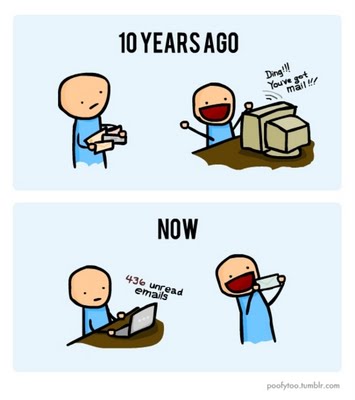
Sending text messages electronically could be said to date back to the Morse code telegraph of the mid 1800s; and the 1939 New York World's Fair, where IBM sent a letter of congratulations from San Francisco to New York on an IBM radio-type, calling it a high-speed substitute for mail service in the world of tomorrow.[21] Teleprinters were used in Germany during World War II[22], and use spread until the late 1960s when there was a worldwide Telex network. Additionally, there was the similar but incompatible American TWX, which remained important until the late 1980s.
Message Formats

The Internet email message format is defined in RFC 5322, with multi-media content attachments being defined in RFC 2045 through RFC 2049, collectively called Multipurpose Internet Mail Extensions or MIME. Prior to the introduction of RFC 2822 in 2001, the format described by RFC 822 was the standard for Internet email for nearly 20 years. RFC 822 was published in 1982 and based on the earlier RFC 733 for the ARPANET (see).[41]
Internet email messages consist of two major sections:
Header — Structured into fields such as From, To, CC, Subject, Date, and other information about the email.
Body — The basic content, as unstructured text; sometimes containing a signature block at the end. This is exactly the same as the body of a regular letter.
The header is separated from the body by a blank line.
Message Header
Each message has exactly one header, which is structured into fields. Each field has a name and a value. RFC 5322 specifies the precise syntax.
Informally, each line of text in the header that begins with a printable character begins a separate field. The field name starts in the first character of the line and ends before the separator character ":". The separator is then followed by the field value (the "body" of the field). The value is continued onto subsequent lines if those lines have a space or tab as their first character. Field names and values are restricted to 7-bit ASCII characters. Non-ASCII values may be represented using MIME encoded words.

